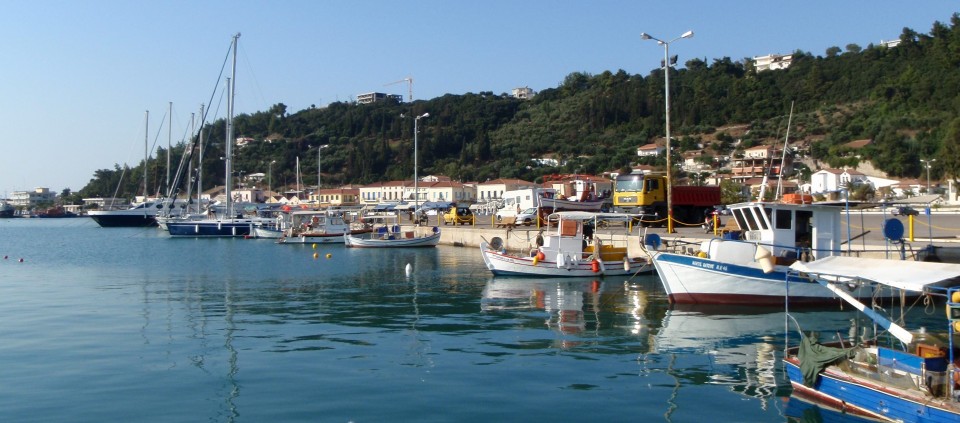Tags
agios andreas, ancient pheia, ancient sites, archaeology, elis, greece, guided tours, history, katakolon, Peloponnese, Pheia, pontikokastro, sunken cities, underwater ruins
Agios Andreas
(1.98 km – approx. 4 mins from Katakolon)
Ancient Pheia (the submerged city) and Pontikokastro
In the bay of Agios Andreas are the remains of Ancient Pheia, which was an important harbor for ancient Olympia. Pheia was partially sucked into the sea by the earthquake that overthrew the Temple of Zeus at Olympia in the 6th century AD. Remains from the wall of Pheia can be traced under water, which were explored by several archaeologists in the 1970’s. Unfortunately, it is not allowed to dive here since there are so many antiquities. (Pheia is not the only submerged ancient city in Greece. In the southern part of the Peloponnese, there are at least 2 more prehistoric settlements (Pavlopetri and one near Methoni) that were sunk into the sea. There are actual plans to turn these submerged cities into underwater archaeological parks. Greece’s underwater wealth was first shown in the 1957 movie “Boy on a Dolphin” with Sophia Loren.)
Immortalized in dozens of works of fiction, the Peloponnesian War took place in the fifth century B.C. between the city-state of Athens and various armies of the Peloponnese, who called themselves the Peloponnesian League. The war lasted nearly 30 years, raging across the Aegean Sea and the northern Mediterranean. One of the cities involved in the war was Pheia, which was conquered by the Athenians and turned into a shipping headquarters for its military supply line.
Near the close of the fifth century, the area along the western coast of Greece was shaken by an earthquake that plunged the city of Pheia five meters (16 ft) below the surface of the Mediterranean. The city was lost until 1911, when an excavation team found the ancient civilization. Since then, numerous archaeologists have studied the city. Despite the global interest in the Pheia ruins, we still don’t know much about this important fragment of history.
Ancient Pheia (Fouache and Dalongeville, 1998), which is now completely under water, situated in the Bay of Aghios Andreas, on the northern side of the cape of Katakolon in Ilia, was the port of Olympia during Greek and Roman times. It is a good example of the high tectonic activity at the front of the Aegean Arc. At the bottom of the bay a fossil beachrock and a fossil notch can be observed. At the end of the 5th century AD, a 6.5m tectonic subsiding movement drowned the site of Pheia, thus providing the sea with an enormous amount of sediments which it shaped into a prograding beach including extremely varied elements, some taken from the submerged city (ceramic, slags, stones), some from the cliff. Later, at an undetermined period, the whole lot was raised, thus leaving the archaeological vestiges 5 meters deep under water and raising the top of the intertidal zone of the beach up to 1.5 m.
Pheia’s low acropolis had a byzantine castle (Pontikokastro or “mouse” castle), which became the Beauvoir of the Villehardouins. The steep site is considerably overgrown, with low remains, one or two towers, and a plethora of potentially dangerous cisterns.
The main thing here is the view, still beautiful!






